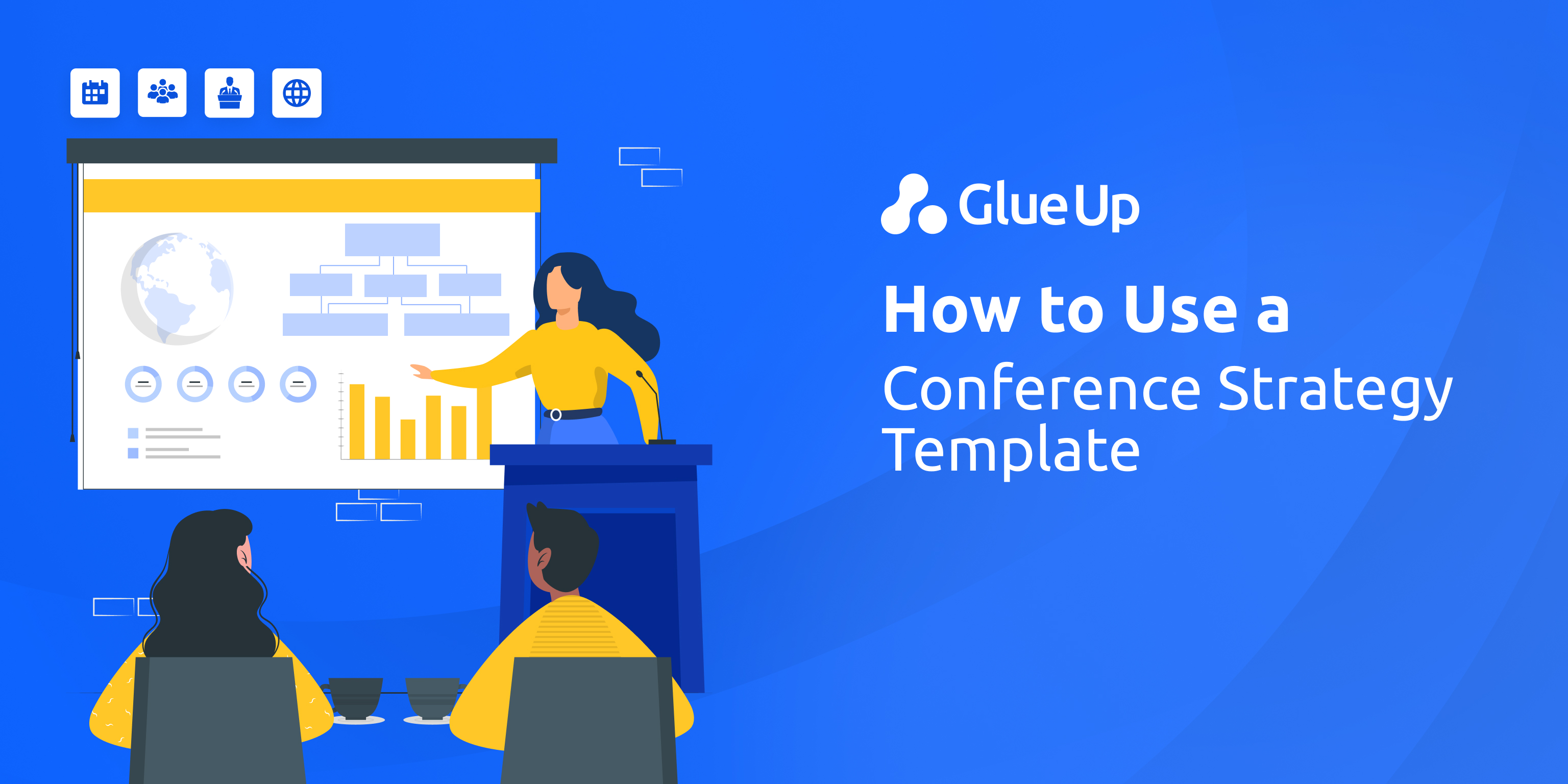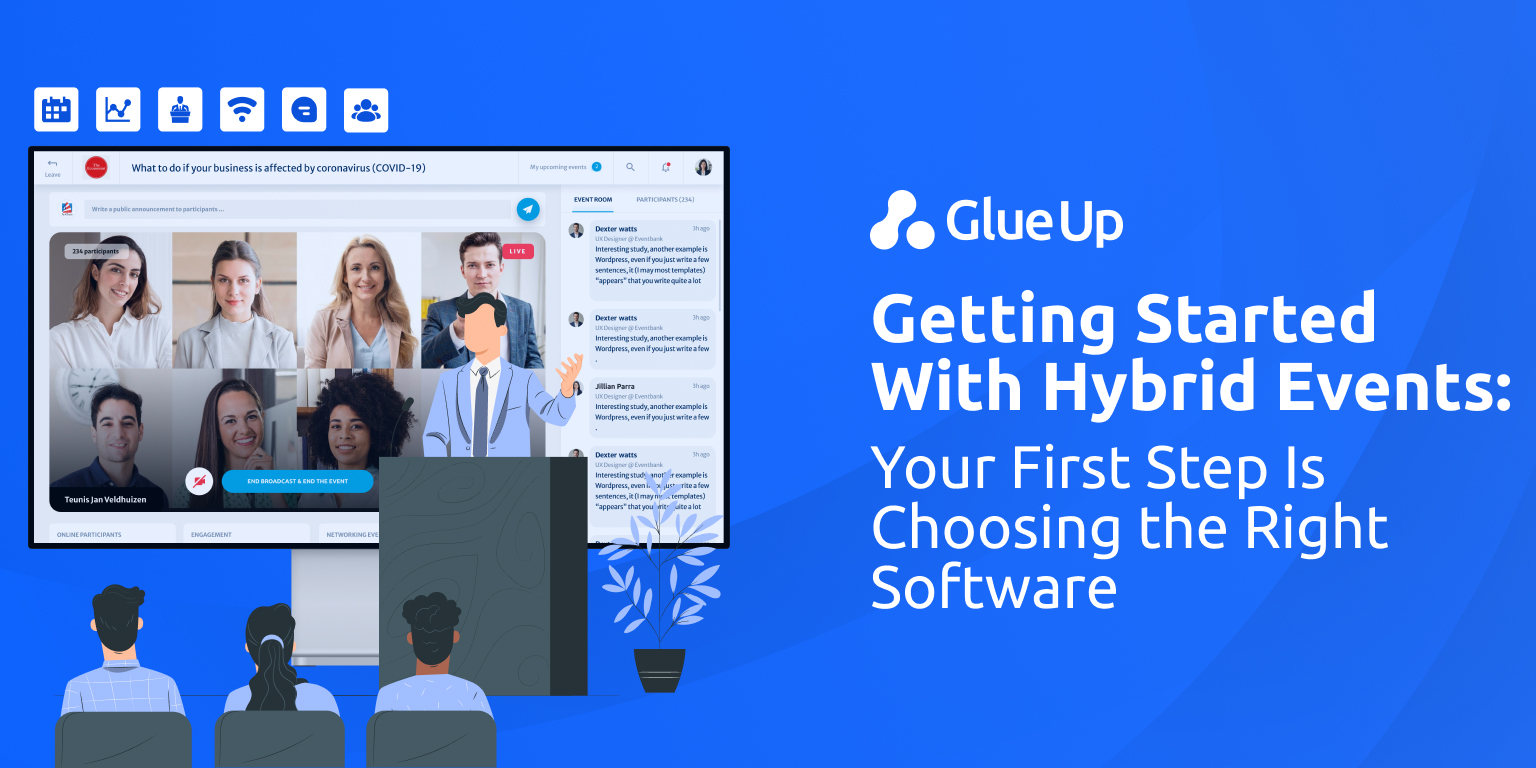
Conferences don’t fail because of bad speakers. They fail because of bad planning. That’s where a conference strategy template becomes your anchor.
Anyone who has ever walked into a chaotic ballroom—projectors not working, registration lines curling into the parking lot, panelists waiting for instructions that never come—knows the sting of poor organization. The truth is, the success of your next conference is not determined on stage, but in the months before, when your team either works from a clear roadmap or drifts in circles.
More than a checklist, it is a living document that ties together your vision, goals, budget, team members, marketing, logistics, and post-event analysis into one structured planning process. It transforms a mountain of moving parts into a timeline you can actually execute.
For associations, chambers of commerce, and membership-driven organizations, this structure is not optional. It is the difference between hosting an expensive meet-and-greet and running a conference that delivers measurable value to members, generates sustainable revenue, and strengthens your organization’s reputation for years to come.
Key Takeaways
A conference strategy template is the backbone of successful event planning—it organizes vision, goals, budgets, timelines, and responsibilities into one structured plan that guides your team from concept to post-event evaluation.
Start early and follow a clear timeline—most associations and chambers should begin planning 12–14 months in advance, with milestones for pre-conference planning, marketing and promotion, logistics, and follow-up.
Marketing and promotion are as critical as logistics—successful conferences balance operational readiness with strong event marketing through social media, email campaigns, paid ads, and a visually appealing event website.
Post-conference follow-up determines long-term success—collect feedback, measure outcomes against specific goals, and use the data to sustain member engagement and improve future conferences.
Glue Up transforms static templates into dynamic systems—while a free conference strategy template offers structure, Glue Up makes it actionable by automating workflows, centralizing data, and ensuring team collaboration at every stage.
What Is a Conference Strategy Template
A conference strategy template is the blueprint that organizes every phase of event planning. It connects strategy with execution, aligning specific goals to the granular tasks that bring them to life.
Think of it less as a “to-do list” and more as the strategic plan of record for your event. A well-built template typically includes:
Vision and Objectives: Why the conference exists and what success looks like.
Timeline: Key milestones from one year out to the day of the event.
Roles and Responsibilities: Clear ownership for team members and stakeholders.
Budget Framework: Tracking income (registrations, sponsorships) and expenses.
Marketing and Promotional Activities: From email campaigns to paid ads and social media strategy.
Operations and Logistics: Venue contracts, catering, AV, transportation, staffing.
Evaluation and Follow-Up: Data collection, reporting, member engagement after the event.
The beauty of a planning template is its flexibility. Whether you are running a scientific symposium, an annual membership conference, or a chamber trade show, the same structure adapts to your purpose.
Why You Need a Solid Strategy
Too many conferences begin with good intentions and end in budget overruns, poor attendance, or feedback forms that make leadership wince. The culprit isn’t usually laziness. It’s the absence of strategy.
A conference strategy template forces your team to confront the real questions early:
What do we want members to gain from this experience?
How much can we responsibly spend, and where will revenue come from?
Which marketing channels—social media, paid ads, email—will best reach our target audience?
Who is responsible for what, and when will it get done?
Without this foundation, you fall into the trap of reactive planning: reacting to crises, overspending on last-minute solutions, and exhausting your staff in the process. With a strategy in place, you give your event a spine. Every decision can be traced back to specific goals, timelines, and ownership.
For member-based organizations, that alignment matters even more. Conferences are often the single most visible investment you make in members each year. A strategy ensures that investment pays off.
Pre Conference Planning
If there’s one secret most successful event planners will admit, it’s this: the real work of a conference happens long before the keynote.
Most experts recommend starting 12 to 14 months in advance. This is when your conference strategy template first comes to life. The earliest stages are about setting intent and giving your team a structured runway.
Key tasks in this phase include:
Define the Theme and Purpose: Tie it to your organization’s mission. A chamber may focus on local business growth; an association may highlight industry innovation.
Establish the Budget: Map income streams (registrations, sponsorships, exhibitor fees) against projected expenses (venue, marketing, staff, logistics).
Assemble the Core Team: Assign roles across committees—programming, logistics, marketing, sponsorship. Make responsibilities visible within the planning template.
Secure Venue and Dates: Lock in early to avoid inflated costs and limited options.
Develop the Event Website: Create a hub for information, updates, and registration.
This is also when Glue Up enters the picture. Instead of juggling spreadsheets, email threads, and sticky notes, organizations use Glue Up’s event management features to centralize budgets, assign tasks, and give all team members access to a shared system of record.
Marketing and Promotion
The best conference in the world means nothing if the seats are empty. That’s why your conference strategy template should dedicate a clear section to marketing and promotional efforts, ideally starting six to nine months in advance.
Strategies to include:
Social Media Campaigns: Build anticipation with speaker spotlights, behind-the-scenes videos, and countdown posts.
Email Marketing: Send segmented campaigns to members, prospects, and sponsors.
Paid Ads: Use targeted campaigns on LinkedIn, Google, or industry-specific sites to boost registration.
Event Website Optimization: Make your site visually appealing, with a simple registration flow and mobile responsiveness.
Sponsorship Visibility: Highlight sponsors early and often to show ROI on their investment.
This phase isn’t just about advertising. It’s about storytelling. Your marketing must connect the event’s purpose to member needs. Why should someone pay, travel, and spend two days with you? What transformation are you offering?
Glue Up automates much of this heavy lifting: branded event websites, automated email series, and analytics dashboards that let you measure which channels are actually driving registrations.
Operations and Logistics
Three to four months before the event, the spotlight shifts from storytelling to execution. This is where operations and logistics dominate the planning template.
A strong conference strategy template will include:
Vendor Contracts: Catering, AV, photography, security.
Staffing Schedules: Who will cover registration, breakout rooms, exhibitor halls.
Technology Testing: On-site check-in systems, apps, microphones, projectors, Wi-Fi.
Run of Show: Minute-by-minute schedule that outlines what happens when.
The goal here is not perfection—it’s readiness. Things will go wrong. A keynote speaker’s flight will get delayed. A projector bulb will burn out. But when you’ve mapped logistics into a planning template, your team knows who handles each scenario.
Glue Up enhances this stage with features like mobile check-in, on-site registration apps, and real-time updates so team collaboration is seamless—even when unexpected changes hit.
Post Conference Follow Up
Your event does not end when the last attendee leaves the ballroom. For many associations, this is where the real value is captured.
A conference strategy template should include a structured post-event process:
Collect Feedback: Surveys, interviews, social media sentiment analysis.
Measure Against Goals: Compare actual registrations, sponsorship revenue, and engagement against targets.
Debrief with Team Members: What worked? What failed? What should be improved next year?
Sustain Engagement: Share recordings, post key takeaways on social media, follow up with non-members who attended.
Glue Up makes this stage powerful by tracking attendance, analyzing engagement metrics, and automating post-event communications. The data you gather feeds directly into planning your next event, making each year stronger than the last.
Free Conference Strategy Template
Templates are powerful because they give structure before creativity takes over. Associations can download a free conference strategy template as a PDF, which outlines:
12–14 month planning timeline
Key milestones for marketing, logistics, and sponsorships
Action items with space to assign responsibilities
Post-event evaluation framework
Think of it as your starting blueprint. But also recognize that a static template has limits. That’s where Glue Up functions as the digital version of your template—a dynamic system that adapts as your event evolves.
Best Practices
Even the best templates can be misused. To maximize impact:
Keep It Visually Appealing: A cluttered template discourages use. Use clean layouts and clear milestones.
Set Specific Goals: Replace vague goals like “increase attendance” with “increase attendance by 15% compared to last year.”
Prioritize Team Collaboration: Share the template across committees. Avoid silos.
Update in Real Time: Don’t let the document gather dust—treat it as a living artifact.
Tie Back to Mission: Always connect conference goals to organizational purpose.
Frequently Asked Questions
What should a conference strategy include?
A full cycle: purpose, goals, budget, timeline, marketing, logistics, evaluation.
How far in advance should you plan a conference?
Start 12–14 months ahead. Smaller events may require less time, but annual conferences benefit from early runway.
How do you measure the success of a conference?
Go beyond attendance. Measure sponsorship ROI, member satisfaction, engagement data, social media impact, and post-event conversions (new memberships, renewals).
Conclusion
Conferences are not just events. They are statements of who your organization is and what it stands for. They are proof to your members, sponsors, and stakeholders that you can bring vision to life.
The difference between a conference that becomes a highlight of the year and one that disappears into memory often comes down to one thing: planning. A conference strategy template gives you the structure, timeline, and action plan to turn ambition into execution.
Glue Up ensures that structure is never left in a drawer. It becomes a living system—automated, collaborative, measurable—so that every milestone is tracked, every responsibility is visible, and every outcome ties back to your mission.
The stage will always belong to your speakers. But the real success? That belongs to the team that dared to plan with clarity.
Book a demo today and see how Glue Up transforms your conference strategy template into a real-world success.



